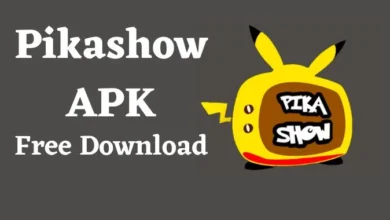AI Ad Generator Buyer’s Checklist: What to Look For Before You Commit

Choosing the best AI ad generator can feel like picking an avocado. Everything looks promising on the outside, “unlimited ads,” “smart templates,” “fast results.” But then you open it up and realize it’s either half-baked or completely rotten.
Whether you’re a solo founder, part of a growth team, or running performance campaigns for multiple clients, picking the right tool matters. Not just for your time, but for your results.
Here’s a smart, honest buyer’s checklist to help you skip the hype and pick an AI ad generator that actually delivers.
Core Features to Evaluate
1. Ad Creative Capabilities
This is the foundation. If the tool only does text, you’re missing half the game. Look for a platform that supports static images, video, and copywriting in one place.
A strong AI ad generator video feature lets you launch UGC-style videos, explainers, or demo content quickly, especially useful for platforms like TikTok or Reels.
Example: A DTC skincare brand may need video demos, testimonials, and carousel images for retargeting. You want a tool that can do all three without jumping between apps.
2. Brand Consistency Tools
You’ve spent time crafting your brand: fonts, colors, logo, tone. Your ad generator should respect that.
The best AI ad generator platforms allow you to upload your brand kit and automatically apply it across assets. Look for tools that let you lock your CTA tone (e.g., “Get Yours” vs. “Buy Now”), ensure brand colors are used in image overlays, and support font selection on social templates.
Pro Tip: The less you have to fix the AI output to make it match your brand, the better the tool.
3. Multi-Channel Support
Your audience doesn’t live on one platform, your ad generator shouldn’t either.
At a minimum, it should support exports for Meta Ads (Facebook and Instagram), TikTok, Google Display, and maybe even Pinterest or YouTube Shorts if you’re branching out. If it only outputs one format or resolution, you’ll waste time reformatting everything.
Best Practice: Look for platform-native dimensions, character count auto-checks, and media file optimization for each placement.
Workflow Must-Haves
1. Ease of Use and Workflow Integration
If you have to watch five YouTube tutorials before launching your first ad, move on.
Good UI matters. So does compatibility. The best AI ad generator tools connect easily to your workflow, think Zapier, Google Drive, Shopify, Slack, Canva, or Meta Business Manager.
Bonus: Points for drag-and-drop interfaces, reusable templates, and folder organization if you’re managing multiple brands.
2. Quality and Customization of Outputs
Fast doesn’t always mean good.
Your generator should give you base content you actually want to use, not outputs that need rewriting from scratch. Look for tools that let you adjust tone (witty, bold, professional), rewrite sections within the UI, and add product specs, features, or reviews as context.
Example: A free AI ad generator online might spit out a “Buy now!” CTA but you should be able to change it to “Find your fit” if that matches your voice.
3. Scalability and Automation
If you’re managing campaigns for multiple products or clients, scalability matters.
Your tool should support batch creation, think generating 10 versions of a product ad at once, each with different hooks or formats.
Example: A Shopify merchant launching a summer sale should be able to generate variant creatives for 20 SKUs and 3 discount offers without clicking “generate” 60 times.
4. Language and Localization Support
Selling internationally? You’ll need localization, not just translation.
Look for tools that support multiple languages but also adapt tone and phrasing based on region. “Free Shipping” doesn’t land the same in Tokyo as it does in Austin.
Ideal Platforms: Offer multilingual ad generation, country-specific templates, and local currency and date formatting.
Pro Tip: If your AI tool simply runs your copy through Google Translate, keep looking.
Pricing and Support
1. Pricing and Value
Cheap doesn’t always equal value. Many tools advertise themselves as “free,” but you quickly hit a wall.
Look out for limits on downloads, paywalls for video export, and locked features like brand voice or A/B testing.
Pro Tip: Always check what “unlimited” really means. Sometimes it’s unlimited generations, but only one project at a time.
2. Customer Support and Community
Things break. Exports fail. Your prompt returns gibberish. When that happens, you’ll want actual help.
The best AI ad generator platforms have live chat support, an active user community or forum, and regular webinars or templates to speed up your workflow.
Bonus: Check their feature roadmap. If they’re rolling out new updates monthly, they’re serious about evolving with marketers like you.
Additional Tips
1. Create a Brand Voice Prompt Template
Before you generate anything, write a 3–5 sentence brand voice guideline you can paste into every prompt. It saves tons of editing later.
Example: “We’re friendly, never pushy. Avoid hard-sell language. Prioritize transformation over product features. Use contractions and modern, everyday language.”
2. Audit Results Regularly
Every few weeks, compare your AI-generated creatives to top-performing manual ones. You’ll spot trends like which tone or CTA style gets better clicks and you can adjust your prompts accordingly.
3. Use It for Testing, Not Just Output
Think beyond production. Use AI to draft five new angles, three opening hooks, or retargeting intros. Then test those ideas live. The data you get back will teach you more than any tutorial ever could.
Buy the Tool That Buys Back Time
At the end of the day, your AI ad generator should save you time and improve performance. If you’re spending more time editing the output than it would take to write it yourself, that’s your sign to switch.
Go for tools that match how you already work, support the platforms where your customers scroll, and let you stay on-brand without friction.
Takeaway: The best AI ad generator isn’t the flashiest. It’s the one that makes your ad creation process feel effortless and helps you test smarter, scale faster, and grow with clarity.




